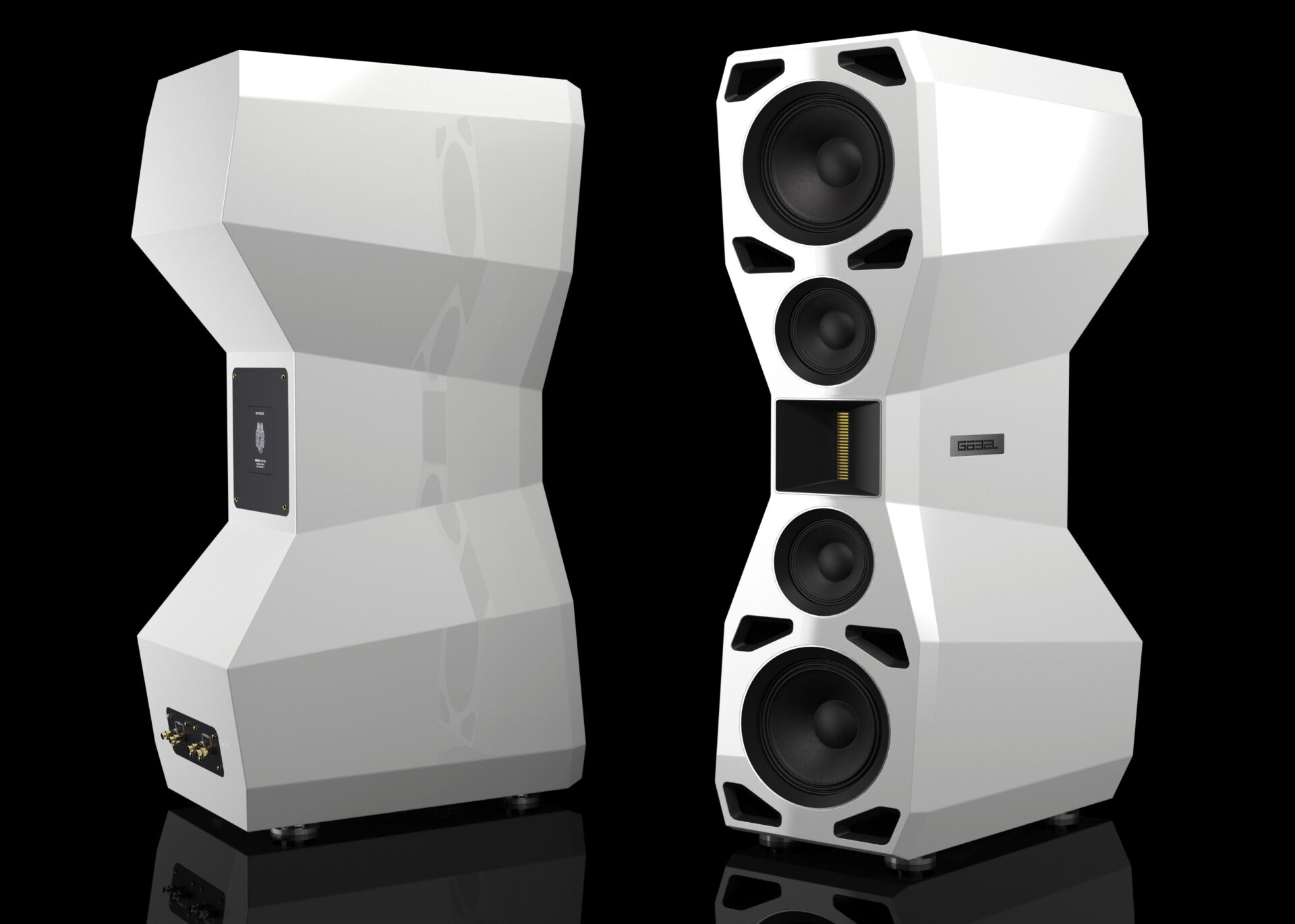
Of course, actually hearing what a Wadax Reference DAC or the CH 10 Series amplifiers can do requires a pair of speakers, which brings m to perhaps the most unexpected part of this system. The Göbel Divin Noblesse loudspeakers are not just a departure from accepted aesthetic convention, at least on the face of it they are a total technological volte-facefor the company that builds them. Göbel established their reputation based on their innovative, wide bandwidth, bending-wave drive unit. A flat panel the size and shape of an iPad, that purports to cover the range from 170Hz to 31kHz, the company pair it with as many as a dozen 7” drivers or ABRs, vertically disposed in slender, almost impossibly waisted cabinets – although “arrays” might be a better word. The squat and powerfully muscular proportions, the stark, angular profile and massive drivers of the Divin Noblesse certainly ring the changes – especially if you stop to consider that, despite its imposing bulk and seriously significant weight, this is the middle model in a range of three, topped off by the even more imposing and extravagant, even weightier and more massive Divin Majestic. Much as I’d have loved to hang the Majestics on the end of this system, the Covid-constrained logistics of the Divin Noblesse were quite demanding enough, although Göbel’s superb packaging certainly helped with handling, while sonically and musically, the second son from this esteemed family certainly didn’t disappoint.
None of which actually helps explain how one company can produce apparently out of the blue, not just a speaker that appears so different to, but one that in many regards, improves on its existing products. But look under the hood and you’ll find that the similarities, especially when it comes to thinking and engineering, are firmly installed beneath that ‘different’ exterior. The driving force behind the emergence of the Divin line was a desire (and a market imperative) to overcome the dynamic constraints of the bending wave designs whilst still – and this is the tricky part – maintaining their low distortion signature. More dynamic range tends to dictate higher efficiency and in turn, that means bigger boxes, bigger drivers and very often, more of them – and the bigger the system the greater the potential for problems. To understand how Göbel overcame those downsides, you need to start by looking at the knowledge and understanding necessary to create the stiff, flat diaphragm of their bending-wave driver. In the Divin series, that sophisticated understanding of distributed vibrational behaviour is applied to minimizing resonance rather than generating it. It is a neat and, if the sonic and musical evidence is anything to go by, highly effective solution.  The proprietary ultra-low distortion drivers combine massive voice coils for thermal stability, fibre-reinforced pulp cones for stiffness and low mass, while the bass loading is a hybrid tuned absorption/symmetrical reflex system, designed to maximise mechanical stability and eliminate cone ‘wobble’. The cabinet is built from constrained layer panels, with six separate internal enclosures, non-parallel walls, critical bracing and strategically-placed kinetic dissipaters (à la Naim). Even the feet get the Göbel attention to detail. Massive stainless steel bosses each sit on three large ceramic balls and a 30mm threaded post for easy, precision adjustment. It’s just as well, as really precise attitude and rake angle are critical to the Divin’s performance. You even get a set of Delrin ‘shoes’ that fit over the stainless-steel feet to allow easy initial positioning. Is there nothing this company hasn’t thought of? A (removable?) flat surface to facilitate angular adjustment would be great, but beyond that this is one of the most complete, beautifully finished and carefully thought through loudspeaker packages it’s ever been my pleasure to work with.
The proprietary ultra-low distortion drivers combine massive voice coils for thermal stability, fibre-reinforced pulp cones for stiffness and low mass, while the bass loading is a hybrid tuned absorption/symmetrical reflex system, designed to maximise mechanical stability and eliminate cone ‘wobble’. The cabinet is built from constrained layer panels, with six separate internal enclosures, non-parallel walls, critical bracing and strategically-placed kinetic dissipaters (à la Naim). Even the feet get the Göbel attention to detail. Massive stainless steel bosses each sit on three large ceramic balls and a 30mm threaded post for easy, precision adjustment. It’s just as well, as really precise attitude and rake angle are critical to the Divin’s performance. You even get a set of Delrin ‘shoes’ that fit over the stainless-steel feet to allow easy initial positioning. Is there nothing this company hasn’t thought of? A (removable?) flat surface to facilitate angular adjustment would be great, but beyond that this is one of the most complete, beautifully finished and carefully thought through loudspeaker packages it’s ever been my pleasure to work with.

